Google Killed Email Job Alerts?
The email job alerts have been killed as part of the UX changes to Google Jobs, at least in Europe.
This change affects the visibility and traffic for job boards and aggregators and alters the job search experience for users.
This blog post will explore the intricacies of what Google Jobs Email Alerts were, the reasons behind their removal in Europe, and the potential impact of this decision on job boards, aggregators, and job seekers alike.
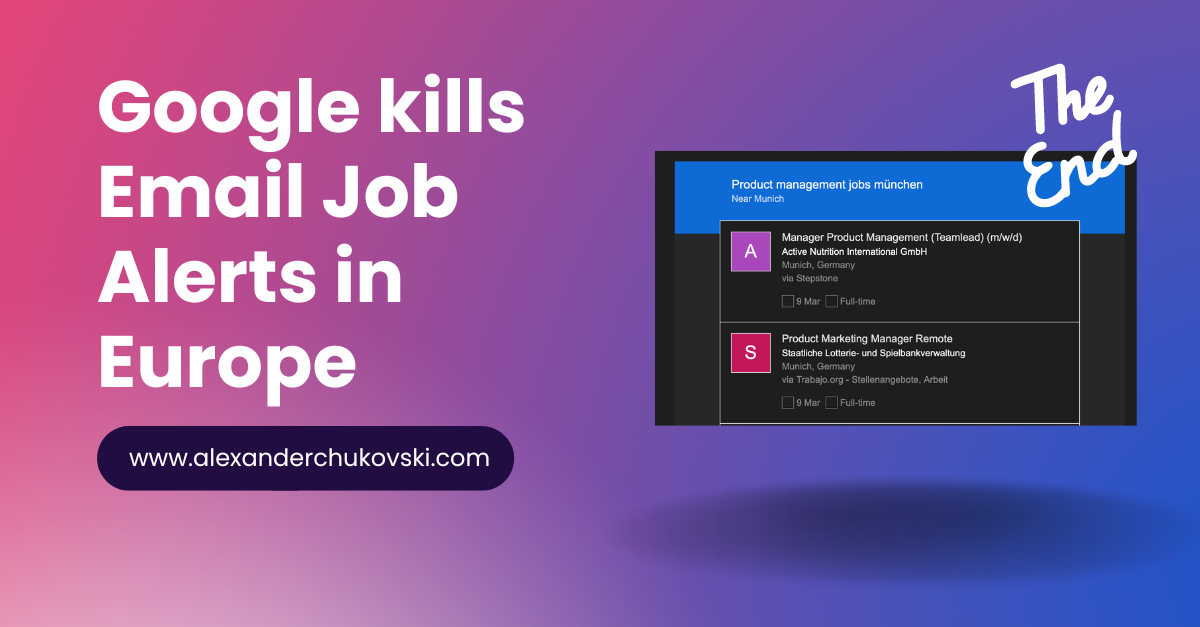
What are(were) the Google Jobs Email Alerts?
This feature allows job seekers to receive email notifications about new job listings that match their search criteria. Here's how it generally works:
1. Job Search: A user searches for jobs on Google (e.g., "retail jobs in Boston").
2. Setting up the Alert: A user with a Google account can set up an email alert for that specific job search query after performing the search. There's a dedicated call-to-action at the bottom of the search results..,
3. Email Notification: Once the alert is set up, Google will notify the user whenever new jobs that match their search criteria are posted. The frequency of these emails can be adjusted (e.g., daily or weekly. A click on a job from this email would lead them to the job ad page on Google Jobs.
4. Customization: Users can create multiple alerts for different job searches and customize them based on various factors like job title, location, company type, etc.
Here is an example of how an email alert looks like today:

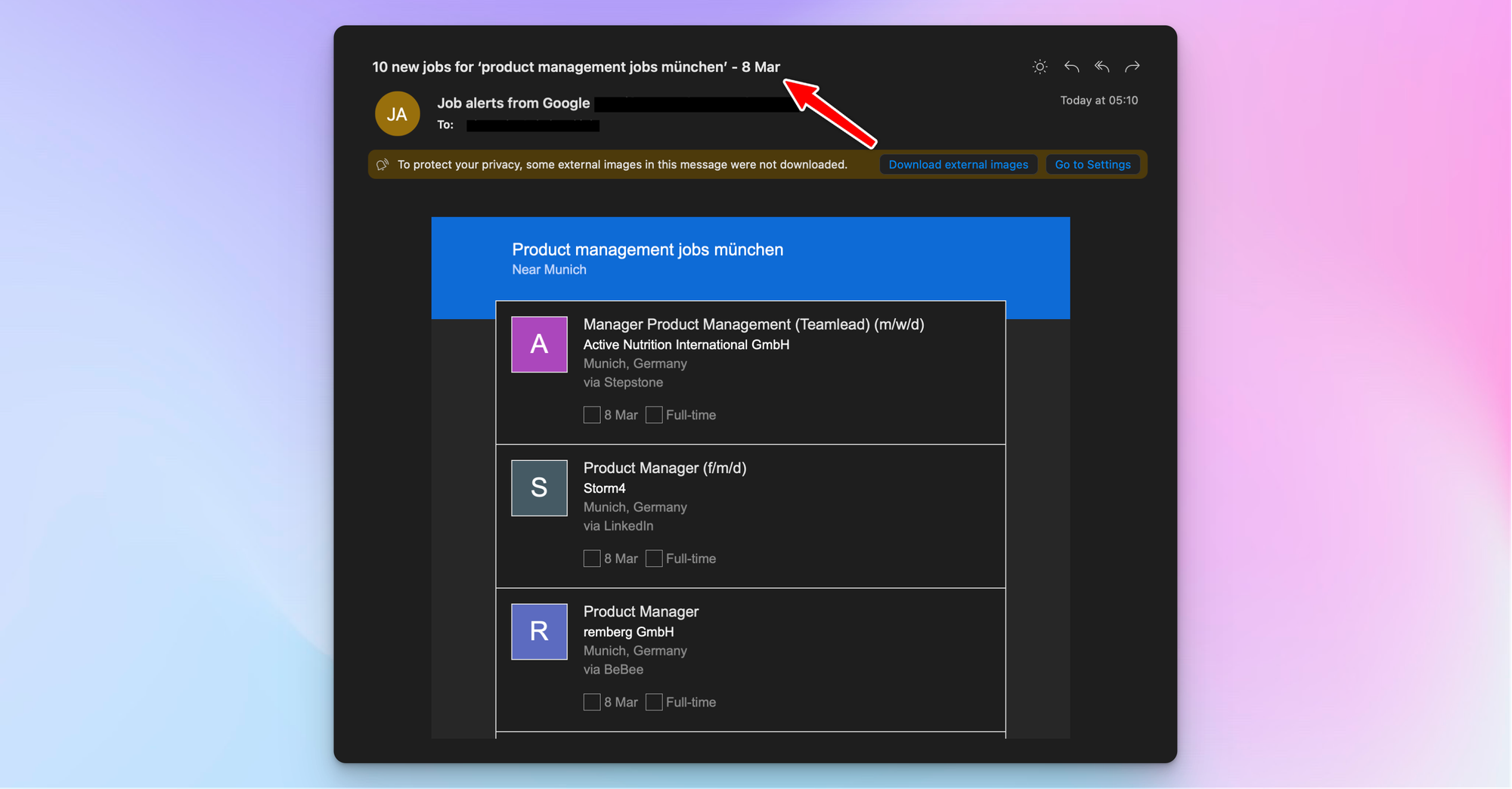
Notice the huge brand exposure, where the top link result is mentioned as a source (Stepstone, BeBee, etc).
Today, the email is still sent, and it still has *new* matching jobs inside, but
clicking on a link results in a broken search on Google instead of landing in
Google Jobs.
When did Google remove the Job Email Alerts?
The changes I described have been live in Germany consistently for the past week and, I assume, for the rest of the EU. Google started testing the removal of alert signups already in January.
The subscribe function was removed from Google Jobs around six weeks after Google rolled out the new UX early in January.
I have covered it here:

In which countries is this change visible?
I only tested in Germany, but it is safe to assume that the change is live in all EU countries as part of the new UX roll-out.
The job email alerts in the US are still working, and users can subscribe:
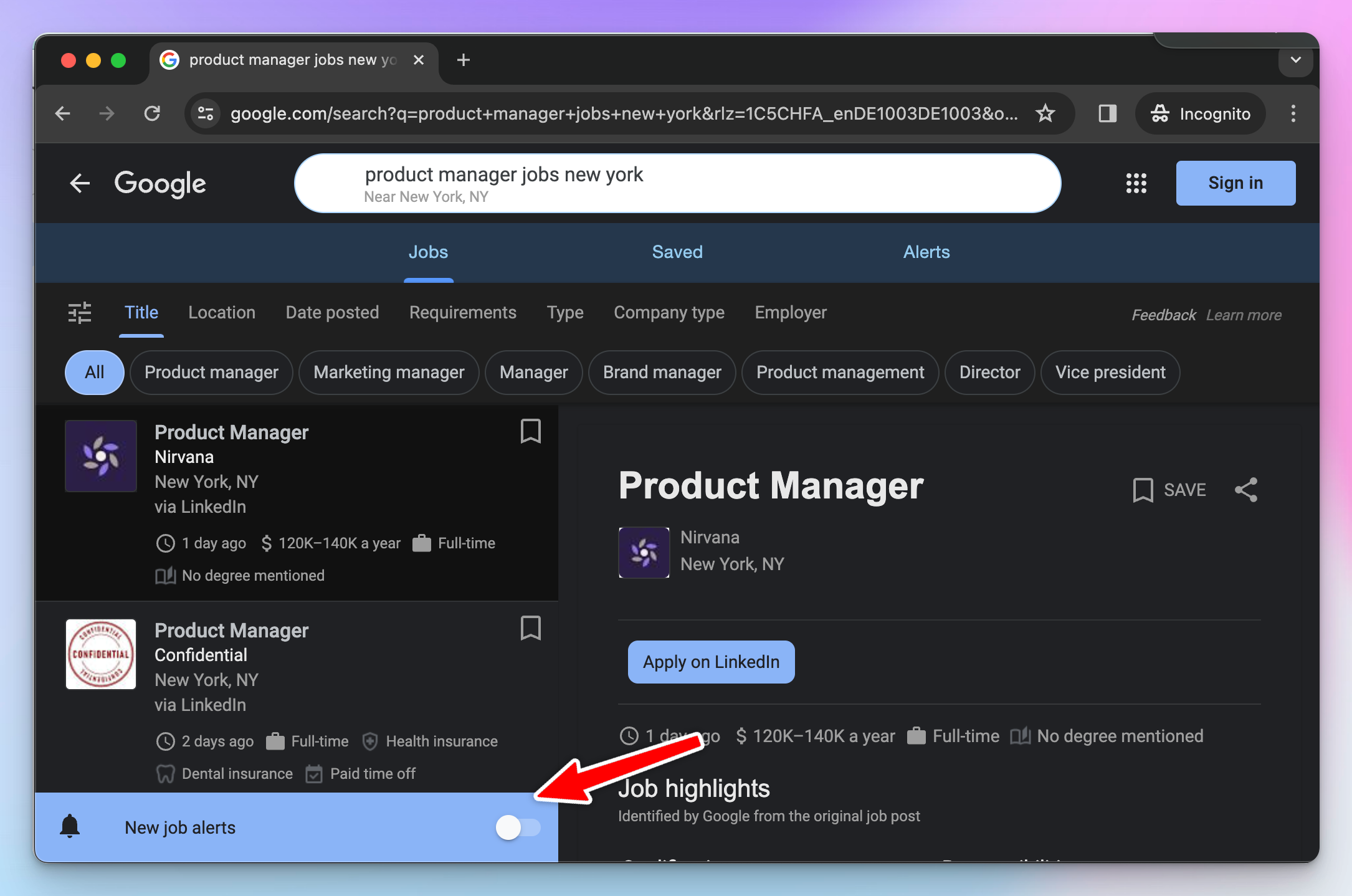
Users can also manage their alerts:
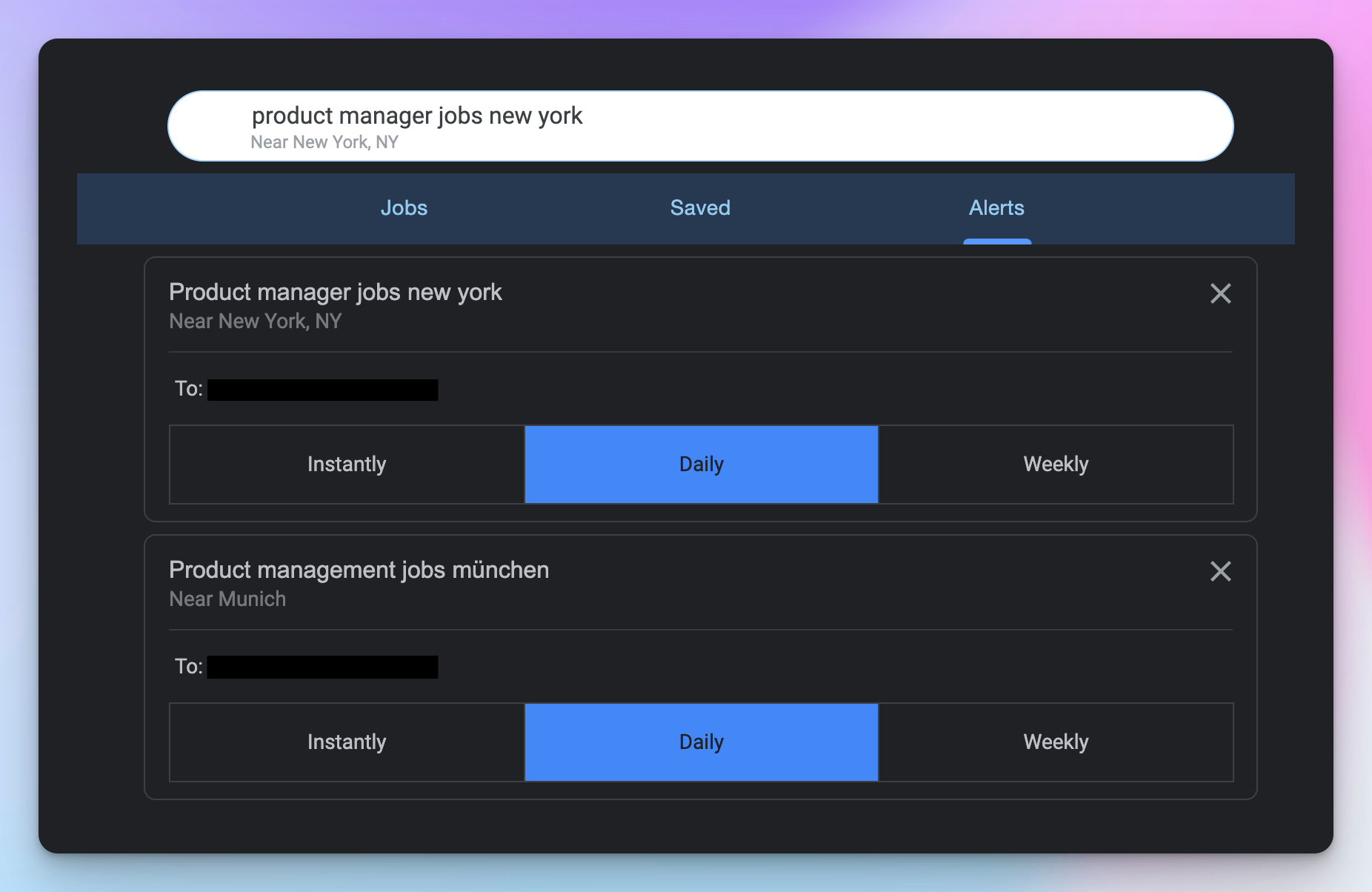
But Google still sends email alerts?
Yes, they do. I still receive emails for all the job alerts I set up as tests. The alerts are still up to date – notice in the screenshot below that the jobs' date is current. So, the functionality that picks jobs and builds the email is still there.
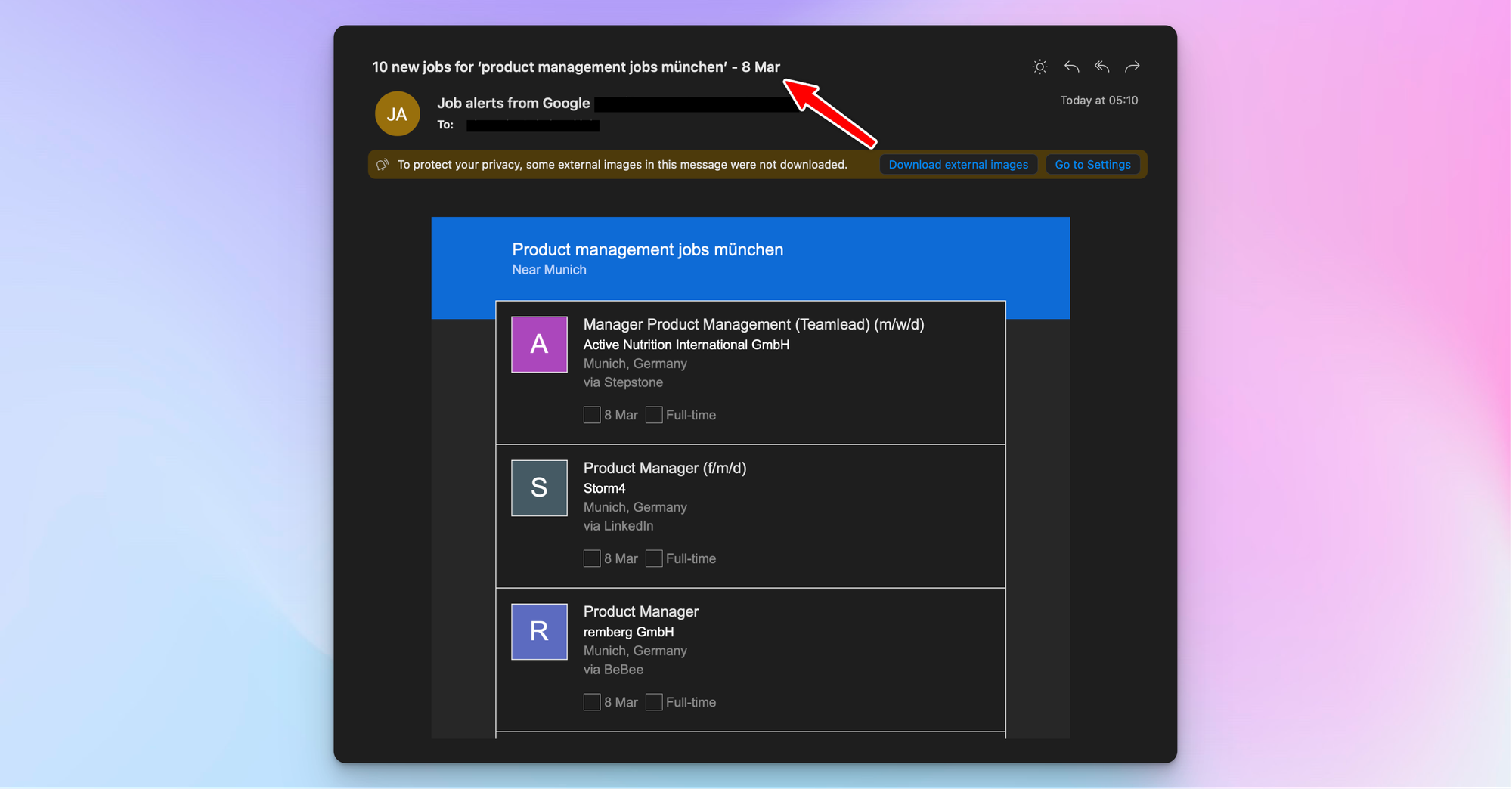
What has changed is that the links don’t lead to a job anymore but to a broken search result page.
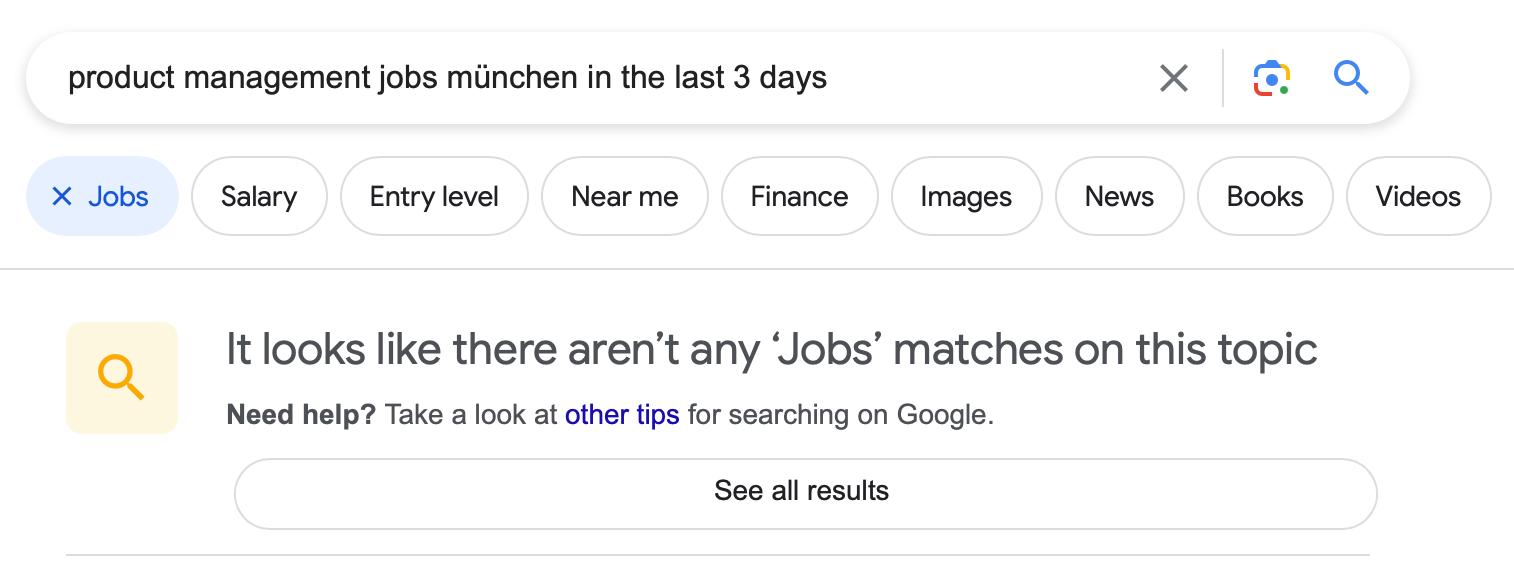
Clicking on the "manage alerts" button at the bottom of the email results in the same broken page.
The only link that works in the email is the unsubscribe one:
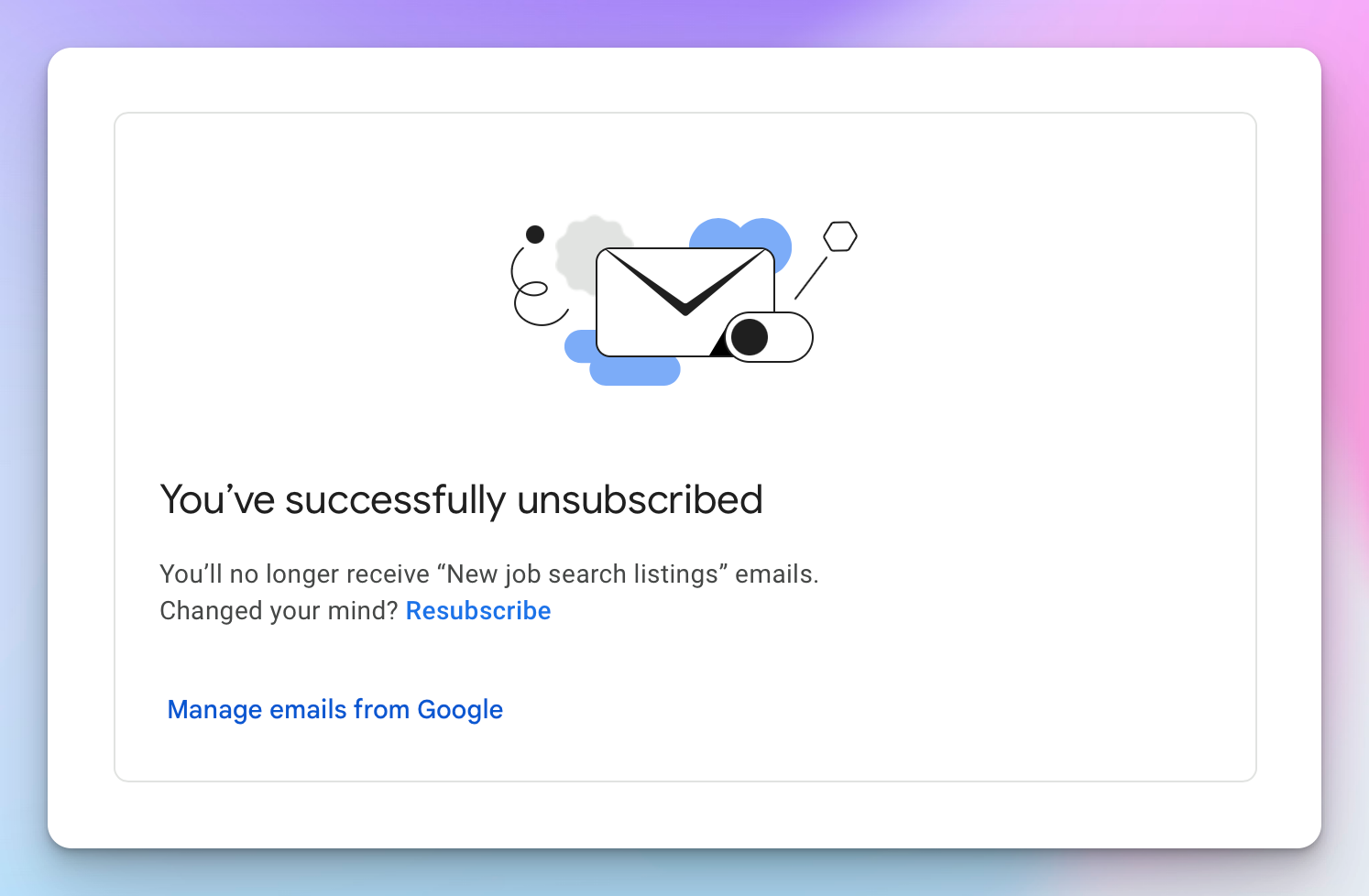
No comment here – I guess some intern screwed up.
What is the impact of this feature deprecation on Job Boards and Aggregators?
It is unclear how many people did this or what traffic came from the alerts as
the UTM parameter “google_jobs_apply” did not differentiate between a direct
visit and a visit from an email click.
These alerts for job boards and employers represented an opportunity to increase their job listings' visibility and brand awareness.
However, the sheer number of people using Google Jobs, the prominent placement of the alerts subscribe button, and the perfect email deliverability from Google are solid requirements for significant traffic. I know the industry consensus is missing here and is different everywhere, but I will bet that 20% or more of Google Jobs traffic came from Email.
Now, back to the original question – deprecating this feature should reduce Google Jobs traffic, except for another UX change in Europe that has been done recently.
The Google Jobs UX change that might compensate for the removal of the alert
Last week, Google rolled out a UX change that removed the full job description from the Ad page and substituted it with a short description snippet. I wrote about it here:
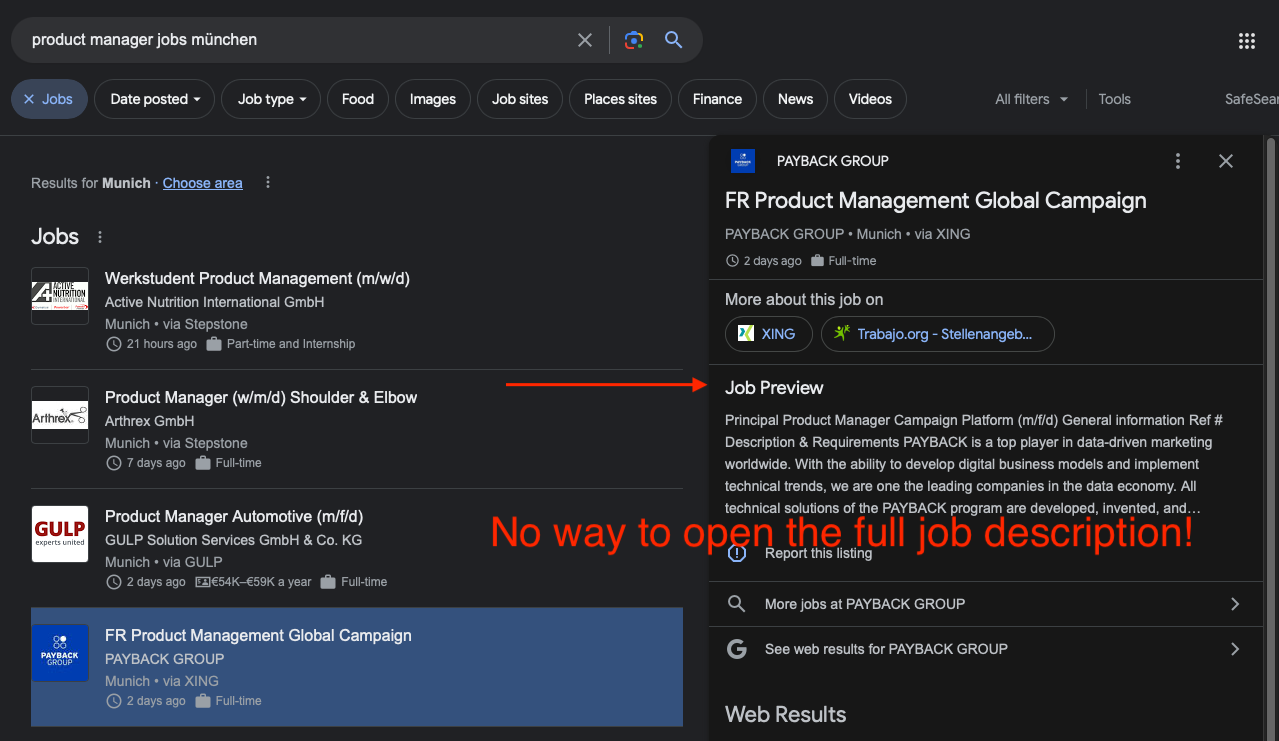
This change will drive traffic to job boards and aggregators ranking well on Google Jobs because users can no longer see the full job description.
There is a good chance these changes will compensate for the lost traffic from email alerts being removed. Unfortunately, we can only predict this due to the need for more statistics. I will measure the impact on some of the sites I manage and report again in 2-3 weeks.
Why is Google removing the job alerts in Europe?
Google's decision to turn off specific functionalities like job alerts in Europe but not in the US could be influenced by various factors, primarily legal, regulatory, and market dynamics.
I would always consider these factors:
- Data protection and privacy in Europe (GDPR)
- Local market requirements
- Legal and regulatory compliance
- Business Strategy
- Usage statistics
With no underlying information, it is hard to make any assumptions, but I have one hypothesis. Google started rolling out the new Google Jobs UX in January after JobIndex began a legal claim against Google Jobs back in 2023 (cover here).
The changes in the UX made the product more integrated into the SERP results, making it feel less like a separate feature.
The decision to remove the full job description is also consistent with part of the claim, which revolved around Google “stealing” job descriptions.
These steps fit in a business strategy focused on reducing legal risk. The email alerts make Google Jobs feel like a separate product that Google can monetize, and this would increase the risk.
Summary – Google removes Job Alerts from Google Jobs
The recent removal of Google Jobs Email Alerts in Europe marks a significant shift in Google Jobs' strategy. While the exact reasons behind Google's decision remain speculative, factors such as market-specific legal risk and strategic business decisions are at play.
I am still determining whether this is an intended change or a broken functionality. However, given that the subscribe button is no longer available in the UX, I am more inclined to with complete removal.
While removing email job alerts seemingly reduces traffic to job listings, this is counterbalanced by another UX change: the decision to no longer display full job descriptions on the Google Jobs platform.
One thing is sure – removing email alerts will reduce brand awareness for significant players.